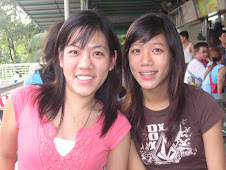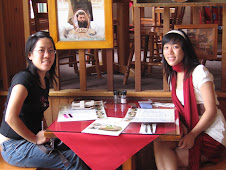
the roving hawkers of the past
in the days when a piece of plain prata cost 10 cents, a plate of plain char kway teow cost 20 cents and char kway teow with eggs cost 30 cents, there was an extra service provided by some itinerant hawkers (those were the true hawkers).
those who were privileged to live in two or three storey houses could have their food delivered to them by means of a basket with a length of rope attached. after an order had been made, the customer would leave the money in the basket and lower the basket to the ground. the hawker would collect the money, placed the ware in the basket and signalled to the person above to haul it up.
in those days, the people hawking food actually moved from place to place according to a schedule which they drew up themselves. much unlike today's "hawkers" who are housed at a fixed place - a so-called hawker centre.
i remember the putu mayam man who balanced a big, shallow basket on his head. he would make his appearance in the morning because most people, regardless of race, preferred to have their putu mayam for breakfast. the putu mayam came with brown sugar and grated coconut.
(we had mistakenly called it 'kutu mayam'. it was only in my adult years that i learnt its proper name.)the breadman would come around in the evening. he would come on his bicycle laden with a big rectangular box, resting on the back of the bicycle. he sold three main types of the bread - the white loaf, the light yellow loaf and the french loaf. those days, bread was bread; there was no branded bread. you did not always have to buy the whole loaf; you could buy them in slices, spread with planta margarine or home-made kaya.
the ice-cream man's show-up time was in the afternoon, usually in the early part of the afternoon. he also had his tub secured to the back of his bicycle. his ice-cream was the home-made type, no brand. he sold the potong ice-cream, sliced ice-cream gripped by thin wafers, ice-cream in cones and ice cream wrapped with a small slice of bread.
in my kampong, the "tok-tick-tok man" would come around at night. he would announce his presence by hitting a short bamboo stick on a piece of curved bamboo to produce the distinctive rhythmic, clacking "tok-tick-tok" sound. the "tok-tick-tok man" sold steaming hot noodles, mainly the soup version.






